Lübeck is a city in northern Germany with a centuries-old maritime tradition, which, thanks to its past as a free Hanseatic city, can boast a UNESCO World Heritage Site status.
The main attraction of Lübeck is its historic Old Town with its characteristic red brick buildings. The famous Holsten Gate, which was once part of the city’s fortifications, is worth a look. Also nearby is the magnificent Lübeck Cathedral, which dates back to the 12th century.
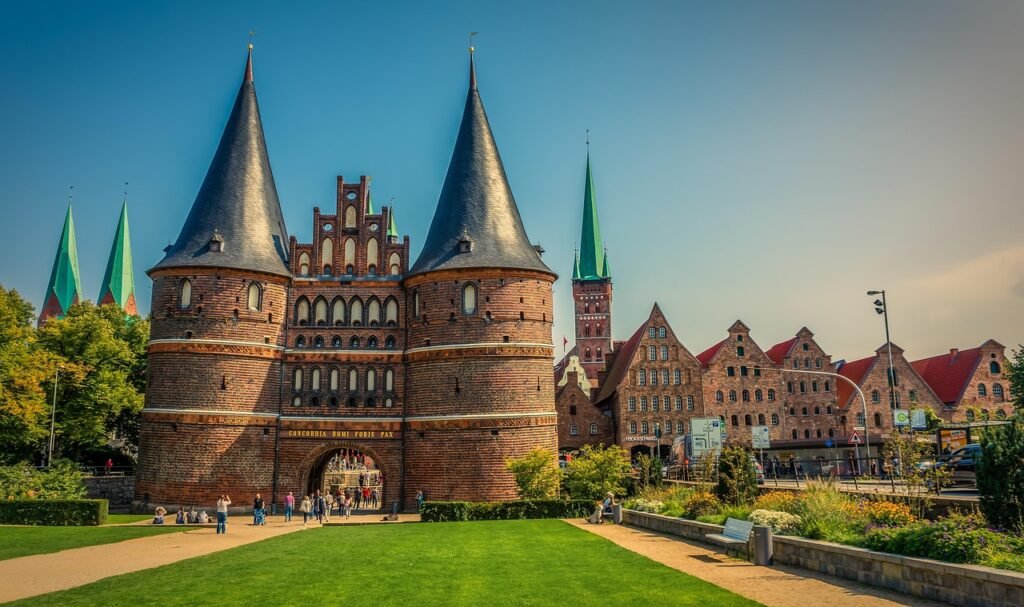
In the old town, visit the Hanseatic Museum, which tells the story of the city’s rich trading past and its role in the Hanseatic League. The convenient location along the Trave River offers relaxing views and boat trips on the Bay of Lübeck. The city also impresses with its port and waterfront.
Lübeck also offers a rich programme of theatre, concerts and festivals. In particular, the annual Schleswig-Holstein Musik Festival. Marzipan, the famous glazed almond delicacy, is one of Lübeck’s culinary symbols. Despite its historic atmosphere, Lübeck is also a modern and dynamic city.
Location
Lübeck it is located on the Trave and Wakenitz rivers, about 9 miles (14 km) from the Baltic Sea. The city is major seaport, Schleswig-Holstein Land (state), northern Germany.
Holsten Gate

The Holsten Gate is a kind of city’s calling card. Equipped with two thick towers, it was built on marshy ground, which led to the subsidence of part of the structure (if you look at it carefully, you will see that the whole thing is crooked).
It is located in the western part of the historic center. It is a huge four-story building located on the banks of the Trave. A fragment of the city fortifications, built in the years 1464-78 by Heinrich Helmstede. It is currently the seat of a museum.
St. Mary’s Church in Lübeck
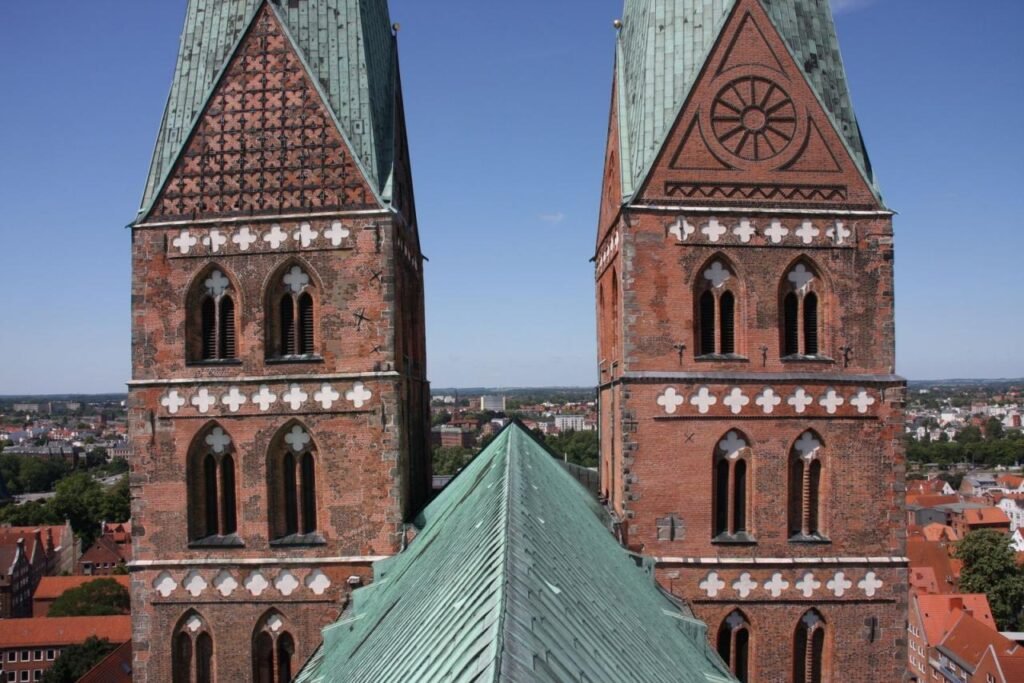
St. Mary’s Church in Lübeck is the third-largest church in Germany and part of the city’s rich history as a former member of the Hanseatic League. St. Mary’s Church took about 100 years to build, and it was consecrated in 1350. While not the oldest, it is the largest church in Lübeck.
Inside, you can see the cathedral’s history: bells that fell during the RAF air raid have been left in pieces on the floor. Other highlights include paintings by Günter Grass, an author, sculptor and painter. There is also a small devil figure sitting on the steps to welcome you.
Hospital of the Holy Spirit in Lübeck

As early as the Middle Ages, the sick were cared for in Lübeck’s Holy Spirit Hospital. In 1286, the impressive building with its three-gabled storefront, four towers and imposing church hall was put into operation.
Today it is considered one of the oldest social institutions still in existence in the world. In the nave, one of Lübeck’s most important brick Gothic buildings, beds were once lined up for the sick and needy. Today you can visit the old living chambers in the longhouse from Tuesday to Saturday.
Burgtor in Lübeck
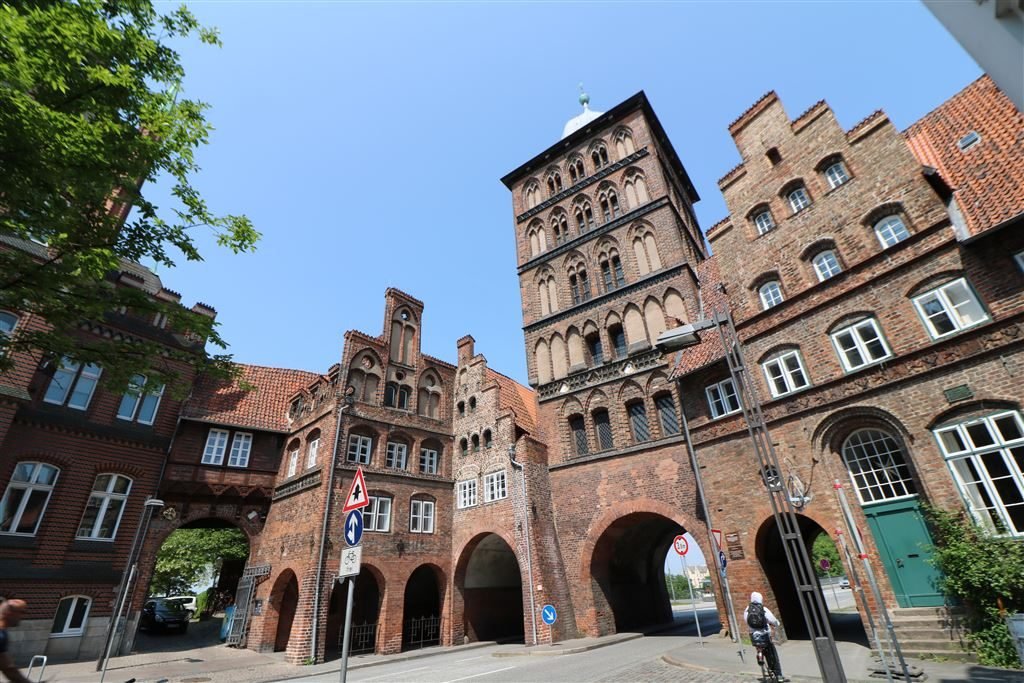
The Burgtor, a medieval city gate and UNESCO World Heritage Site, is a remarkable gateway to Lübeck’s historical past. It is the city gate leading north towards Travemünde and is the older of the two preserved city gates. The Holsten Gate and the Burgtor are aristocratic gates that once led into the old town.
Lübeck Salt Storage
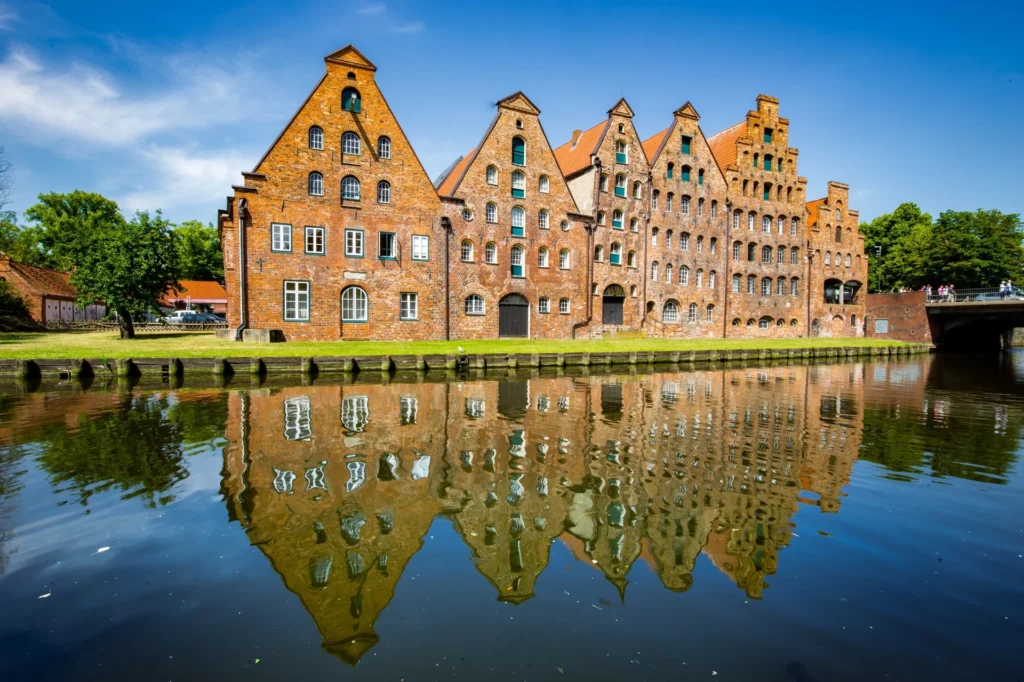
The salt warehouses are located on the Obertrave River right next to the Holsten Gate. They were built between 1579 and 1745. They are a group of warehouses in the brick renaissance style.
Until 1839, the warehouse closest to the Holsten Gate belonged to the “Saline Oldesloe”. This is evidenced by the bas-relief in the clinker of the façade. Originally, the warehouses were used to store salt from Lüneburg.
European Hanseatic League Museum
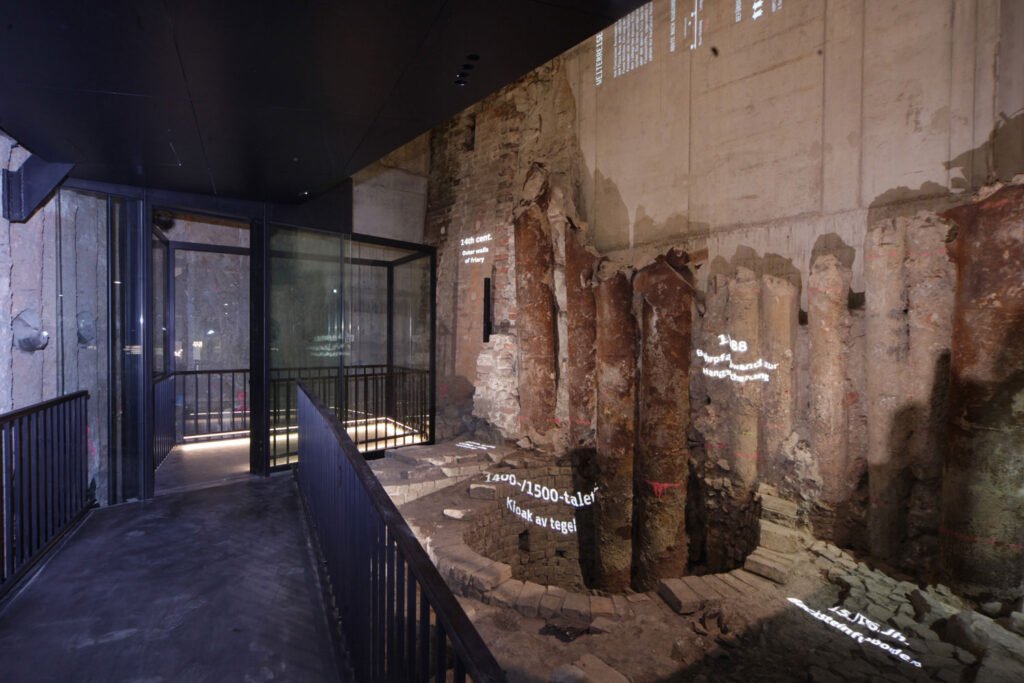
The European Hansemuseum features a permanent exhibition that includes original historical objects, interactive elements, and staged historical scenes. These exhibits provide a glimpse into the former trading ports of the Hansa Novgorod, Bruges, Bergen, London, and Lübeck, offering visitors a unique opportunity to immerse themselves in the history of the Hanseatic League.
Günter Grass-House

The Günter Grass House in Old Town is a museum dedicated to the literary, painting, and sculpture works of Nobel Prize winner Günter Grass. Grass lived near Lübeck until his advanced age, and the museum tests to his diverse artistic output.
Buddenbrookhaus (Buddenbrook House)
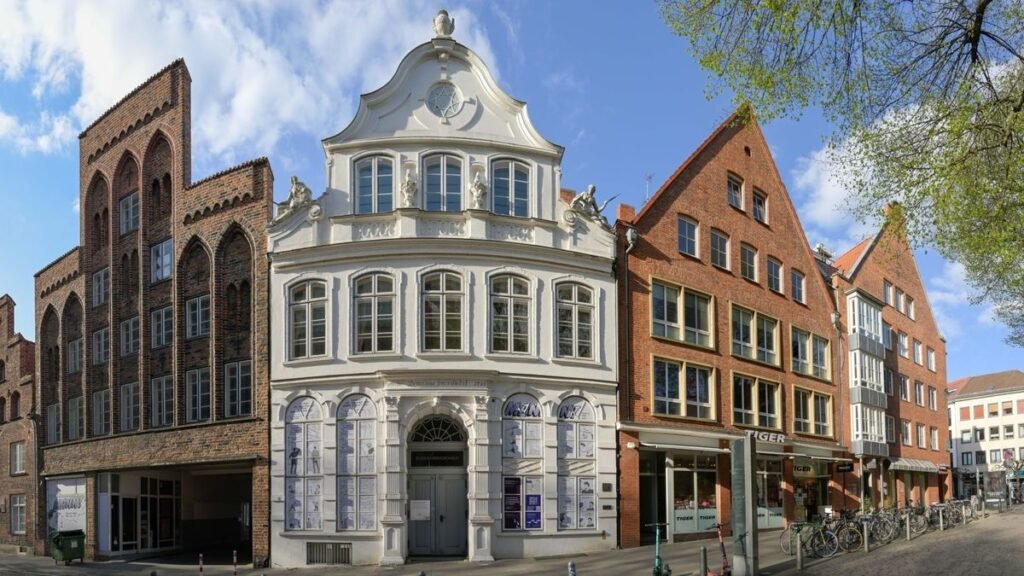
The Buddenbrookhaus: The Behnhaus Drägerhaus Museum is a fitting representation of the world of the Buddenbrooks and the Lübeck merchant class from which Heinrich and Thomas Mann came. The Buddenbrookhaus was the real home of the Mann family. In the novel, it also represents the literary reflection of the residence of the Buddenbrooks.
The house houses a museum with two permanent exhibitions: “The Buddenbrooks – A Century Novel” and “The Manns – A Family of Writers.” There is also a floor for changing special exhibitions. The Heinrich and Thomas Mann Center is a research center and organization of exhibitions and literary events.
Church of St. James
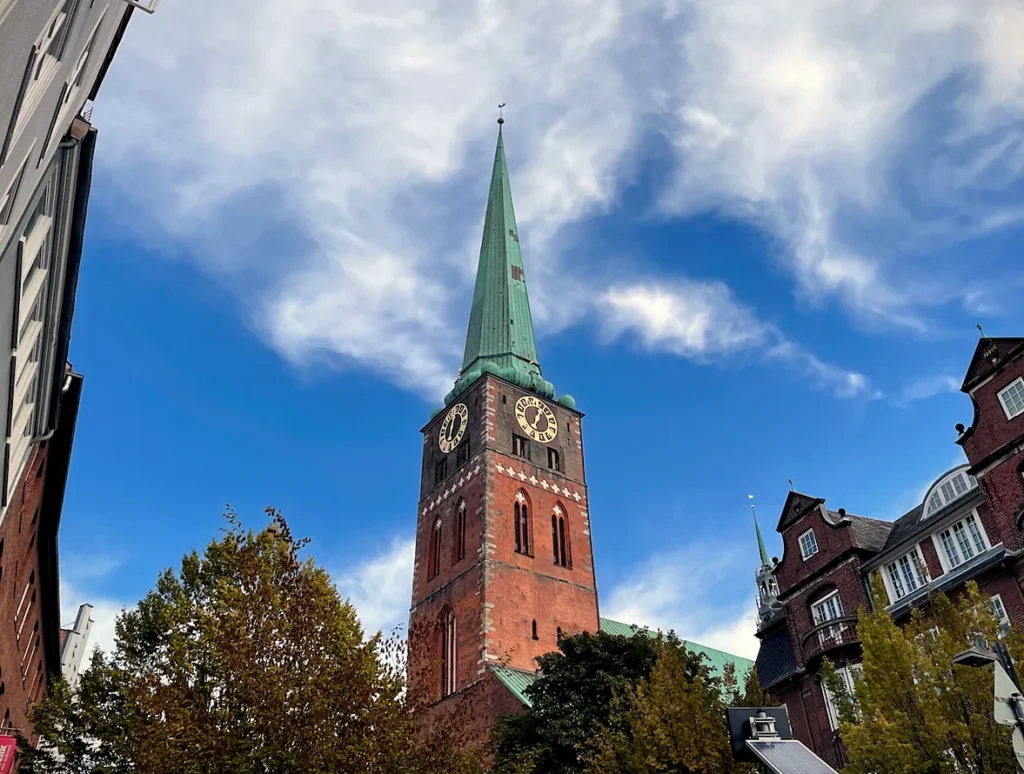
St. James’ Church was consecrated in 1334, serving as a church for sailors and fishermen who still have their “Schütting” (originally from the Norwegian “Skotting” and now known as Schøttstuene) for meeting houses in the shipping company opposite the church.
The patron saint of the church is Saint James the Elder. The church also serves as a stop on a branch of the North German Way of St. James, alongside the Holy Spirit Hospital and the neighboring Gertrudenherberge.
Passat Ship

The Passat is a historic German four-masted steel barque, and one of the renowned Flying P-Liners. These sailing ships were operated by the German shipping company F. Laeisz. The Passat is one of the last surviving windjammers, making it a significant piece of maritime history.
Travemünde Strand
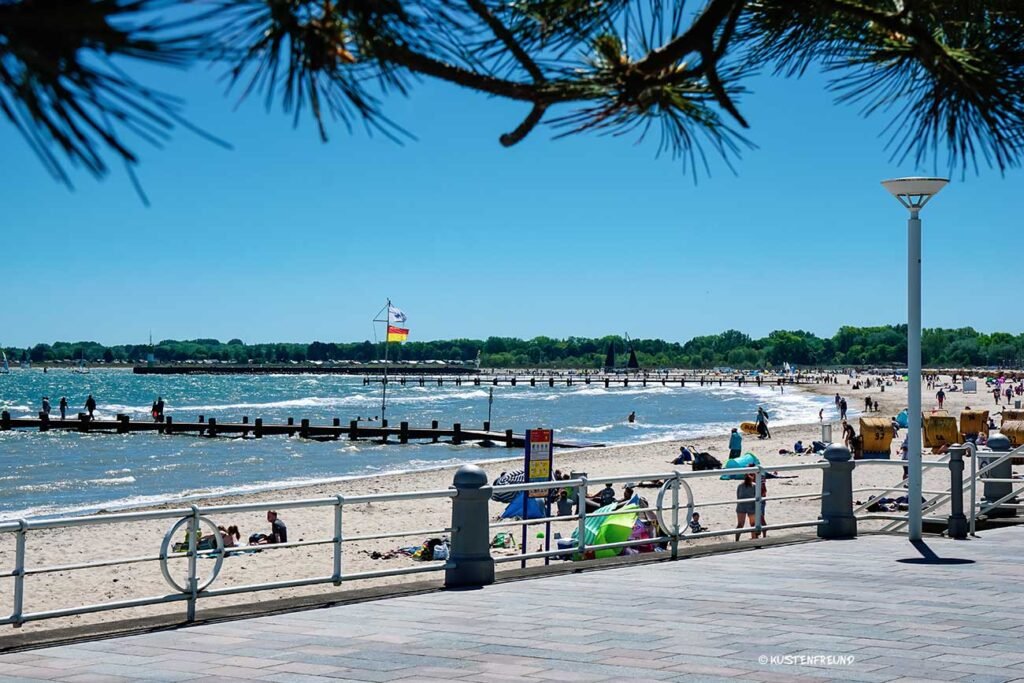
The sandy beach, the green beach, and the Brodtener Ufer, with its up to 20-meter-high cliffs, are always beautiful for hikes and walks in any weather. From the approximately 2.5-kilometer-long beach promenade, you have unobstructed views of Travemünde’s beach.
